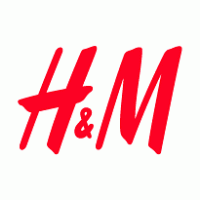H&M, the Sweden-based international apparel retailer, reported that revenue for the fiscal year and fourth quarter (through November 30, 2015) was up 19% and 14%, respectively, year over year in Swedish kronor, the company’s reporting currency.
In local currency, full-year sales grew by 11%, while fourth-quarter sales grew by 9%.
Despite the double-digit growth in the two periods, the results were below consensus estimates. Group revenue excluding VAT was SEK180.9 billion (US$21.7 billion) for the fiscal year versus consensus of SEK181.5 billion (US$21.7 billion) and SEK48.7 billion (US$5.8 billion) for the fourth quarter versus consensus of SEK49.6 billion (US$5.9 billion), according to S&P Capital IQ.
Profit after tax was also below expectations. For fiscal year 2015, net income was SEK20.9 billion (US$2.5 billion), up 5% year over year but below consensus of SEK21.0 billion (US$2.5 billion). The fourth quarter saw a year-over-year net income decline of 11%, to SEK5.5 billion (US$0.6 billion), below consensus of SEK5.6 billion (US$0.7 billion).
The company reported earnings per share of SEK12.63 (US$1.51) for the full year, an increase of 5% versus a year ago but below the consensus estimate of SEK12.70 (US$1.52). Earnings per share for the fourth quarter were SEK3.34 (US$0.39), a decline of 11% and below consensus of SEK3.39 (US$0.40), according to S&P Capital IQ.
The company cited the strength of the US dollar against the Swedish krona, H&M’s reporting currency, and the unseasonably warm weather in November as the respective reasons behind the lower-than-expected results for the fiscal year and fourth quarter.
Strong Dollar and Unseasonal Weather Curbed Results
A strong US dollar raised purchasing costs for H&M, which sources most of its apparel in Asia, where it pays in dollars. Other external factors, including raw material prices, cost inflation, capacity at suppliers and transportation costs, also negatively impacted results. Unseasonably warm weather in November in H&M’s core European markets and the US negatively impacted sales.
Store Expansion Contributes to Sales Growth
Sales growth during the periods reported was helped by a significant expansion in store numbers; the company added a net total of 413 outlets during the year, and 249 during the fourth quarter alone. Moreover, the company expanded online shopping into 10 new countries over the year. At the end of the fiscal year, the retailer had 23 online markets, and 3,924 physical stores in 61 markets.
H&M CEO Karl-Johan Persson said, “2015 has been a very expansive year for the group....We have successfully established stores in our new markets of India, South Africa, Peru, Taiwan and Macau.”
Persson added that in addition to expanding store numbers, the company continued to invest in order to seize the opportunities presented by digitalization and to broaden its brand and product range. For example, during the fiscal year, the company successfully launched H&M Beauty—a cosmetics product range—in 900 stores in 41 markets.
Full-year sales expanded significantly in the US, where they were up 18% year over year and where the company opened 59 new stores during the fiscal year. In China, full-year sales were up 16%, and 83 new stores were opened. Among other main markets, Germany saw full-year sales grow by 2%, while the UK saw an 8% increase, France a 7% increase and Italy a 17% increase (all figures in local-currency terms). Store numbers have increased in all of these markets. In Sweden, H&M’s domestic market, sales were up 6% during the fiscal year, despite the company opening no new stores in the country during the year.
Looking Ahead: Store Expansion Continues in 2016
Looking ahead to fiscal year 2016, H&M plans to continue growing its revenue through store and online expansion. The group’s CEO said, “Our growth target of increasing the number of stores by 10%–15% per year with continued high profitability remains intact.”
H&M plans to add 425 new stores during fiscal year 2016. Most of the new store openings are planned for existing markets, with the most significant increases in the US and China. New markets in which the group plans to expand include New Zealand, Cyprus and Puerto Rico. H&M also plans to expand online shopping in nine additional markets where it already operates brick-and-mortar stores: Ireland, Japan, Greece, Croatia, Slovenia, Estonia, Latvia, Lithuania and Luxembourg.
